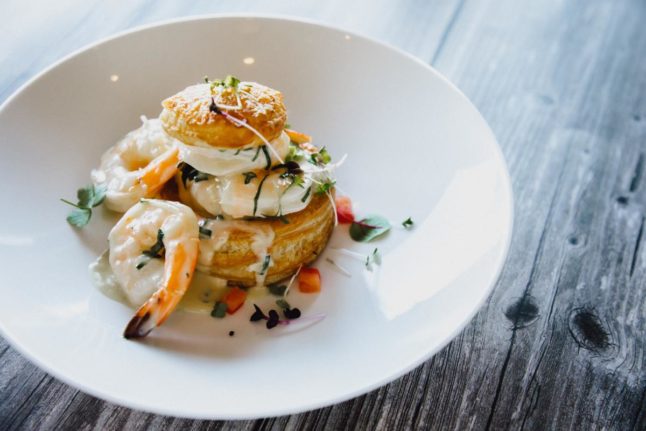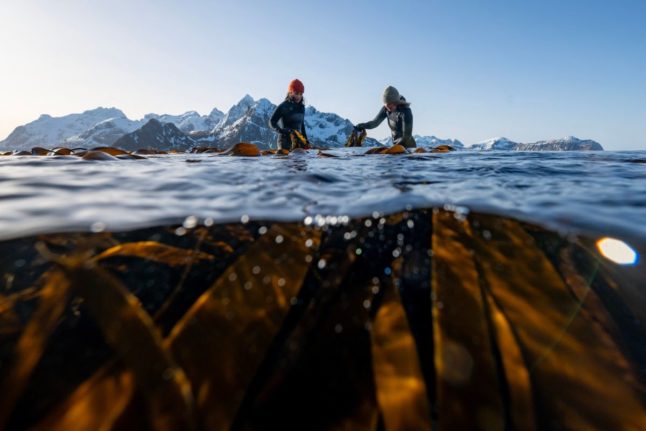Six new Norwegian restaurants received Michelin stars when the Nordic Countries Guide for 2023 was published last week: À l’aise, Sabi Omakase Oslo, Mon Oncle, Stallen, SAVAGE, and K2.
Scandinavia’s cooking elite gathered in Turku, Finland, to award this year’s stars and individual honours for chefs in the Nordics.
Five of the new stars awarded were given to restaurants in Oslo, while the other star was given to an eatery in Stavanger.
Six new restaurants awarded one Michelin star
À L’aise in Oslo, a long-time contender for a star, has been recognised for its “use of Norwegian produce to create sumptuous French dishes,” according to the Michelin Guide.
Located in Oslo’s Universitetsgata, Mon Oncle’s inclusion in this year’s Michelin Guide didn’t come as a major surprise. After all, the eatery is run by the restaurant manager of the three-star Michelin restaurant Maaemo, Esben Bang Holmboe. The Guide lauded Mon Oncle’s “classic Gallic cuisine prepared with great care,” as well as its “impressive wine list.”
Sabi Omakase Oslo, sister to the original in Stavanger (which already boasts one star), has also been recognised in the latest edition of the Nordics Guide. While the counter at the restaurant only seats 12 people, Michelin praised Sabi Omakase Oslo for its “traditional sushi skills.”
The SAVAGE team received its first star, impressing Michelin with a “menu blending flavours from around the world.”
Sebastian Myhre, the owner and executive chef at Oslo’s Stallen, is a great believer in sustainability. His team started cultivating produce for their own use in 2017 – two years before Stallen was launched. It is precisely this focus on local produce – as well as Stallen’s surprise menu – that caught the eye of Michelin reviewers.
Last but not least, the final restaurant to receive one star in 2023 is K2, based in Stavanger in southwestern Norway. Located in Pedersgata street, a popular Stavanger foodie hub, K2 impressed Michelin with its locally sourced produce, as well as its overall charm.
Many preserved their stars
Hot Shop, the bistro that got its Michelin start in 2022, is named after the former sex shop the building used to house. It’s located on Københavngata street in east Oslo. The canteen-style bistro serves tasting menus based on seasonal, local ingredients, which the 2022 Michelin Guide described as “elegant, vibrant and technically adept, with delicate touches and real depth of flavour”.
Schlägergården in Lilleaker, on the eastern outskirts of Oslo, got to keep the one star it received last year. The restaurant is in a converted 18th-century farmhouse with a set menu consisting of local produce, some foraged, grown, or preserved by the eatery’s staff. In 2022, Michelin described the food there as “pure, expertly crafted dishes which have bold, emotive flavours”.
Over on Norway’s west coast, Lysverket in Bergen also retained its Michelin star. The eatery serves up creative, modern takes on Norwegian dishes accompanied by craft cocktails. The restaurant is housed in an art museum, with the menus showcasing “intelligently crafted, balanced dishes”. Bergen’s Bare, a high-end restaurant focusing on regional ingredients located in the city centre – conveniently close to the city’s Fish Market and Old Wharf – also got to keep its star.
The new Nordic cuisine behemoth Maaemo retained its three Michelin star status, while Re-naa kept its two stars.
Other Norwegian restaurants that upheld their one Michelin star in the 2023 edition of the Nordics Guide include Under (Lindesnes), Speilsalen (Trondheim), Credo (Trondheim), FAGN (Trondheim), Sabi Omakase (Stavanger), Statholdergaarden (Oslo), Kontrast (Oslo), and Hyde (Oslo), which all have one Michelin star.





 Please whitelist us to continue reading.
Please whitelist us to continue reading.
Member comments